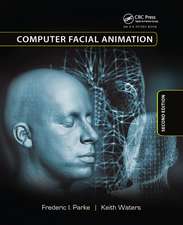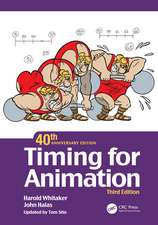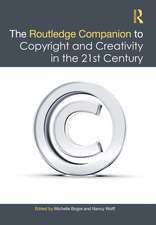The Uncanny Valley in Games and Animation
Autor Angela Tinwellen Limba Engleză Hardback – 10 dec 2014
In this book, the author provides a synopsis of literature about the Uncanny Valley phenomenon and explains how it was introduced into contemporary thought. She then presents her theories on its possible psychological causes based on a series of empirical studies. The book focuses on how aspects of facial expression and speech can be manipulated to overcome the Uncanny Valley in character design.
The Uncanny Valley in Games and Animation presents a novel theory that goes beyond previous research in that the cause of the Uncanny Valley is based on a perceived lack of empathy in a character. This book makes an original, scholarly contribution to our current understanding of the Uncanny Valley phenomenon and fills a gap in the literature by assessing the biological and social roots of the Uncanny Valley and its implications for computer-graphics animation.
Preț: 541.91 lei
Preț vechi: 741.22 lei
-27% Nou
Puncte Express: 813
Preț estimativ în valută:
103.69€ • 108.56$ • 85.80£
103.69€ • 108.56$ • 85.80£
Carte tipărită la comandă
Livrare economică 05-19 aprilie
Preluare comenzi: 021 569.72.76
Specificații
ISBN-13: 9781466586949
ISBN-10: 146658694X
Pagini: 236
Ilustrații: 1 black & white illustrations, 10 colour illustrations, 1 black & white tables
Dimensiuni: 156 x 234 x 18 mm
Greutate: 0.48 kg
Ediția:1
Editura: CRC Press
Colecția A K Peters/CRC Press
ISBN-10: 146658694X
Pagini: 236
Ilustrații: 1 black & white illustrations, 10 colour illustrations, 1 black & white tables
Dimensiuni: 156 x 234 x 18 mm
Greutate: 0.48 kg
Ediția:1
Editura: CRC Press
Colecția A K Peters/CRC Press
Public țintă
Professional Practice & DevelopmentCuprins
The Uncanny Valley. Previous Investigation into the Uncanny Valley. Survival Horror Characters and the Uncanny. Uncanny Facial Expression of Emotion. Applying Psychological Plausibility to the Uncanny Valley. The Mind’s Mirror and the Uncanny. Attachment Theory and Threat to Self-Concept (Ego). Will We Ever Overcome the Uncanny Valley?
Notă biografică
Dr. Angela Tinwell's research on the Uncanny Valley in human-like characters is recognized at an international level. As well as British media coverage on BBC television and radio, her work has been featured in news articles for The Guardian and Times Higher Education and in the American magazines Smithsonian, New Yorker, and IEEE Spectrum Magazine. In 2012, Tinwell completed her PhD dissertation, titled "Viewer Perception of Facial Expression and Speech and the Uncanny Valley in Human-Like Virtual Characters," and she has since published extensive studies on the topic. Her publications include empirical studies in the journal Computers in Human Behavior and theoretical writings for Oxford University Press. Tinwell's research into the Uncanny Valley in human-like characters is relevant in academia and industry, and she has presented her work with animators from the special effects company Framestore at the London Science Museum. As part of the Digital Human League, Tinwell is working with visual effects professionals at Chaos Group (creators of V-Ray rendering software) aimed at overcoming the Uncanny Valley.
Recenzii
"It synthesizes the literature about the Uncanny Valley, explains its psychological foundations, and considers how facial expression and other facets can be applied to overcome the issues, and it also provides a new theory to compliment other writings on the subject, making this a 'must' for gaming programmers, covering both prior surveys and new ideas."
—Midwest Book Review
—Midwest Book Review
Descriere
This book is an essential guide for animators and video game designers on how to overcome the Uncanny Valley phenomenon when designing human-like characters in digital applications. The author provides a synopsis of literature about the Uncanny Valley phenomenon and explains how it was introduced into contemporary thought. She then presents her theories on its possible psychological causes based on a series of empirical studies. The book focuses on how aspects of facial expression and speech can be manipulated to overcome the Uncanny Valley in character design.


























